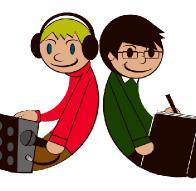On the origins of art and symbolism (and how to get famous?)
An intriguing summary of views on the the origins of art and symbolism is presented in the following article:
Elizabeth Culotta (2010) Did Modern Humans Get Smart Or Just Get Together? Science 9 April 2010 328: 164 (in News Focus) The basic idea is that when lots of people get together, they can pool their experiences and skills and produce art and symbolic systems that are more complex.
Innovations by individuals, and increases in cognitive abilities, were not the only factors responsible for the emergence of complex human cultures in the past... and cultures that became isolated, and that were represented by smaller populations, became simpler.
None of this is surprising in the context of modern societies today. Complex cultural and commercial districts have been evolving and devolving like mad in recent years.
The challenge is to understand when and how more-complex or less-complex prehistoric art and symbolism came into existence.
Archaeological discoveries of ancient art have been a key to understanding how humans became modern (or mad?), and archaeology is one of the disciplines where we can most often see connections between art and science - in what is studied, and also in how results are presented.
Artistic and scientific reconstructions of the past are usually more sophisticated when artists and scientists are able to work together. It would be good if such interactions could be encouraged across many disciplines, and many publications.
After all, the earliest artists in humanity were probably also our earliest scientists.
I imagine a cartoon showing a cave artist with a magnificent work of art, standing in a scrappy little rock shelter, brush in hand, explaining to a child:
"You want to know why I am painting this picture? This is just my first draft. I want to get it published in a famous cave (or Science magazine) some day!"
Elizabeth Culotta (2010) Did Modern Humans Get Smart Or Just Get Together? Science 9 April 2010 328: 164 (in News Focus) The basic idea is that when lots of people get together, they can pool their experiences and skills and produce art and symbolic systems that are more complex.
Innovations by individuals, and increases in cognitive abilities, were not the only factors responsible for the emergence of complex human cultures in the past... and cultures that became isolated, and that were represented by smaller populations, became simpler.
None of this is surprising in the context of modern societies today. Complex cultural and commercial districts have been evolving and devolving like mad in recent years.
The challenge is to understand when and how more-complex or less-complex prehistoric art and symbolism came into existence.
Archaeological discoveries of ancient art have been a key to understanding how humans became modern (or mad?), and archaeology is one of the disciplines where we can most often see connections between art and science - in what is studied, and also in how results are presented.
Artistic and scientific reconstructions of the past are usually more sophisticated when artists and scientists are able to work together. It would be good if such interactions could be encouraged across many disciplines, and many publications.
After all, the earliest artists in humanity were probably also our earliest scientists.
I imagine a cartoon showing a cave artist with a magnificent work of art, standing in a scrappy little rock shelter, brush in hand, explaining to a child:
"You want to know why I am painting this picture? This is just my first draft. I want to get it published in a famous cave (or Science magazine) some day!"

